Coronavirus Today: Were you a winner?
- Share via
Good evening. I’m Russ Mitchell, and it’s Friday, June 4. First, we’d like to ask you to do us a favor.
As the economy reopens and life returns to something close to normal for many Californians, we’re rethinking how this newsletter can best serve you. What do you like (or dislike) about this newsletter, and what do you want to see more of? We’d love your feedback. Please take a few minutes to fill out our survey here. Thanks!
Now, here’s the latest on what’s happening with the coronavirus, plus ways to spend your weekend and a look at some of the week’s best stories.
If Gov. Gavin Newsom is recalled in a special election this year, he might consider launching a second career as a game show host.
That’s certainly what he looked like Friday as he appeared before a gold sparkly curtain, a wheel of fortune and a lottery ball basket to pick 15 winners who’ll get $50,000 each once they’ve had their second dose of COVID-19 vaccine. (The lucky recipients weren’t named to protect their privacy.) It was part of an effort to boost immunizations that also gives the governor a chance to give away $116.5 million to potential voters before they decide his fate at the polls.
Newsom’s critics see it all as a political stunt. Republican Caitlyn Jenner, who plans to run against Newsom in the recall election, described the giveaways as “more bribes from Gavin Newsom trying to buy your votes.”
The governor says that incentives work and that he would “absolutely” be spending money the same way if he weren’t facing a recall.
In the middle are those like Los Angeles County Public Health Director Barbara Ferrer, who said the offerings might attract some people who have been procrastinating, “but it’s not going to move the needle with those who are really resistant.”
In a tacit admission that the “Vax for the Win” program won’t solve all of California’s pandemic problems, Newsom said Friday that the state’s COVID-19 state of emergency order will remain in place even after the June 15 reopening.
The emergency declaration — issued in early March 2020, when coronavirus cases started to mushroom statewide — gives Newsom and state health officials broad authority to temporarily impose new rules and restrictions, a power they’ve exercised numerous times throughout the pandemic.
California is now enjoying the lowest COVID-19 case rate of any state and hospitalizations near record lows, but the danger has not passed, the governor said.
“This disease has not been extinguished,” Newsom said. “It’s not vanished. It’s not taking the summer months off.”
Officials in L.A. County hope to boost immunizations by closing four large-scale vaccination sites and replacing them with smaller ones. The site at Cal State Northridge will close Monday, and others at the Forum in Inglewood, the Pomona Fairplex and the L.A. County Office of Education in Downey will follow after June 13.
Starting June 15, officials said, residents can instead go to vaccination sites at Ted Watkins Memorial Park in South L.A., the Commerce Senior Citizens Center or the Norwalk Arts & Sports Complex.
The shift to smaller sites was prompted by a decline in demand for the COVID-19 vaccine. (It’s hard to believe that just a few short months ago, the biggest concern with the vaccines was how to deal with people trying to cut the line.)
Among those who have yet to get vaccinated are young people in their teens and twenties. That’s especially true among the county’s Black and Latino residents.
The county reports that only 24% of Black residents and 37% of Latinos in their twenties or younger have received at least one injection. By comparison, 54% of white residents in that age category, 53% of Native Americans and 70% of Asian Americans have received at least one shot.
Black and brown residents, many of them essential workers, bore the brunt of this pandemic, Ferrer said. “If they’re not protected by the vaccine with the lifting of public health safety measures, they can again have the highest risk of getting infected, being hospitalized or dying from this virus.”
The vaccination inequities reflect a number of complicated issues, Ferrer said, including a historical lack of medical resources in underserved communities. Officials have struggled to convince some people that the vaccine truly is free and that getting it won’t affect immigration status. And getting immunized is more challenging for lower-income residents who may be working two or more jobs and worry about the potential of having to take a day or two off to deal with side effects.
One more note about vaccines: Doctors are reporting sporadic cases of heart inflammation in teens and young adults after they receive a second dose of COVID-19 vaccine, and health authorities are trying to determine whether the shots are responsible.
A study published Friday in the journal Pediatrics described the cases of seven teens, ages 14 to 19, who received shots of the Pfizer-BioNTech vaccine in April or May and developed chest pain within a few days. Heart imaging tests showed a type of heart muscle inflammation called myocarditis.
None of the patients — all boys or men — became critically ill, and all were healthy enough to be sent home after two to six days in the hospital. One of the doctors who cared for them said it’s likely their heart conditions were temporary.
By the numbers
California cases, deaths and vaccinations as of 5:58 p.m. Friday:

Track California’s coronavirus spread and vaccination efforts — including the latest numbers and how they break down — with our graphics.
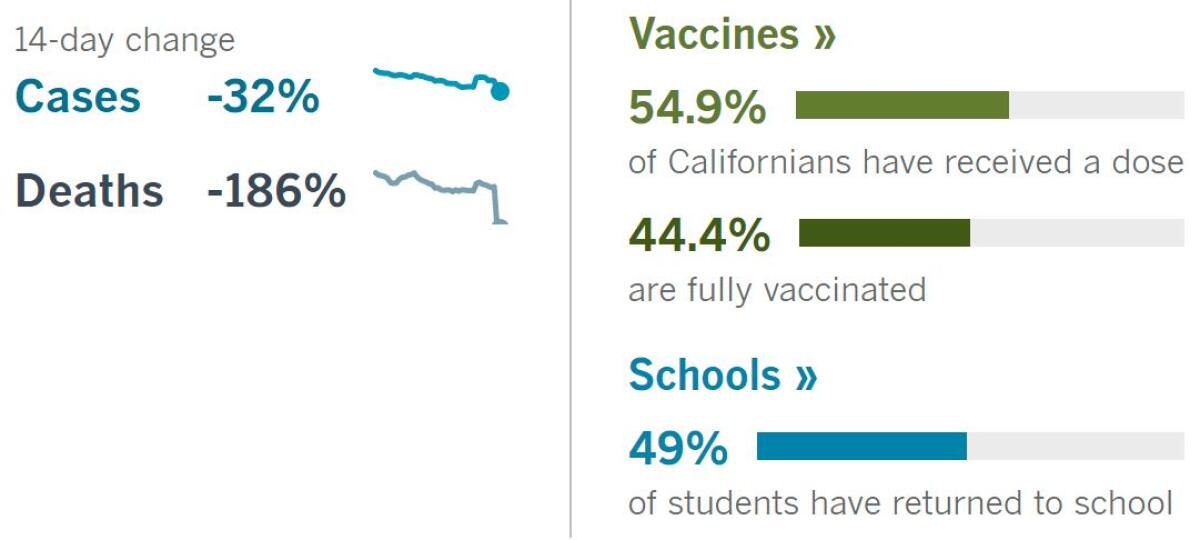
See the current status of California’s reopening, county by county, with our tracker.
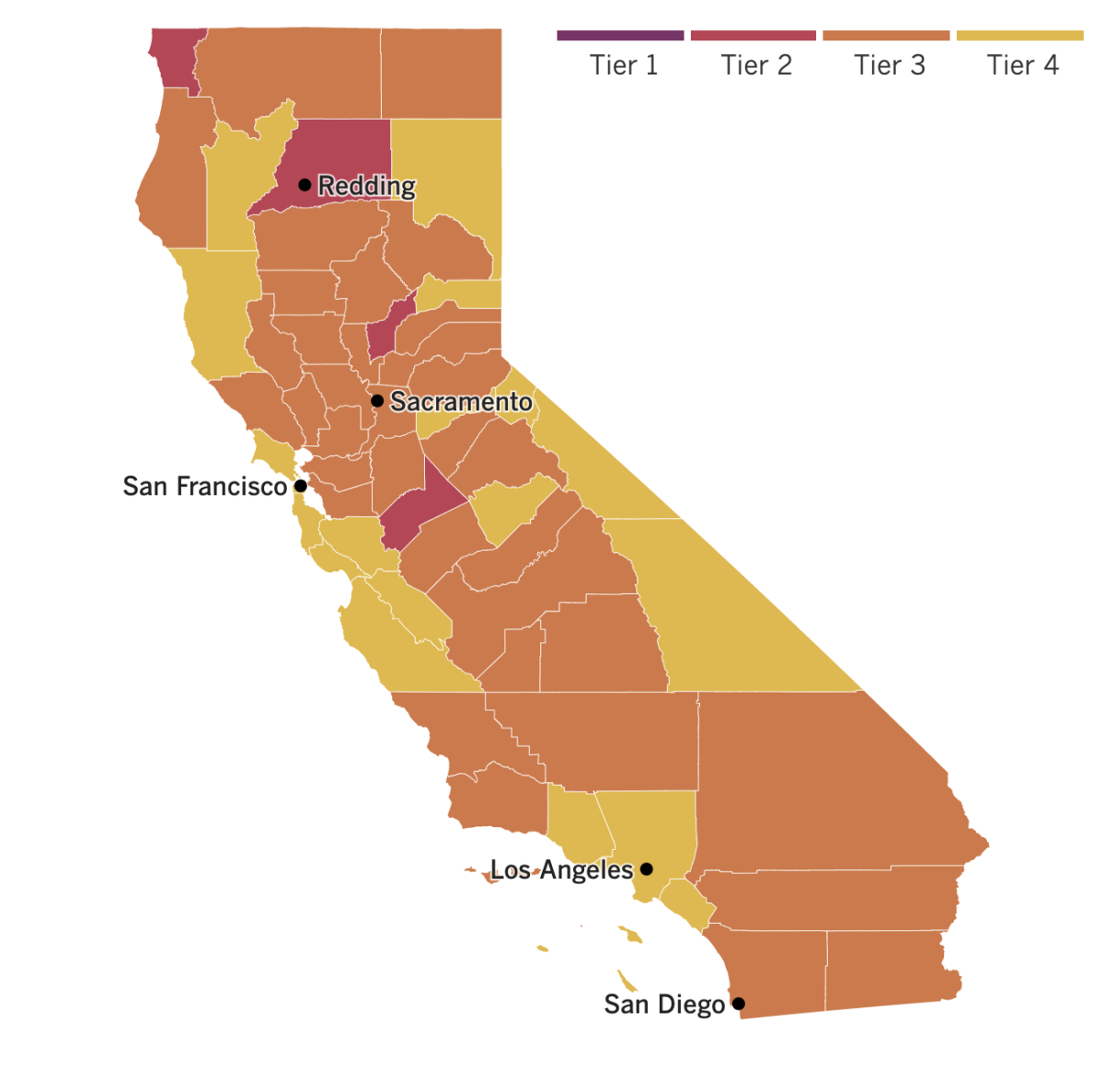

What to read this weekend
A survivor’s story
There are countless remembrances and life stories in the media about people who have died of COVID-19 — as there should be.
Less common are stories about those who’ve suffered and survived. The suffering isn’t just physical. It’s mental, emotional, spiritual and, too often, financial.
Richard Perry, a 58-year-old resident of Compton, spent his life working hard, saving money, buying and fixing up his own house, and always trying to do the right thing. Then he was hospitalized with COVID-19, wondering whether, even if the disease didn’t kill him, “I’m going to lose everything I worked for all my life.”
My colleague Joe Mozingo followed Perry’s lonely war in Room 533 of Martin Luther King Jr. Community Hospital in Willowbrook, where he prayed day and night. “Look, God, I been doing everything I can all my life to do the right thing. … I didn’t do drugs. I didn’t drink. I always respected everybody. And you want to take me? Give me another chance. I want another chance in life.”
He got it.

A tale of two sisters
One sister lives in Los Angeles and is fully vaccinated. The other lives in Cleveland and has no intention of letting anybody inject her with a vaccine she fears was developed in haste.
The L.A. sister is Times columnist Sandy Banks, and in this revealing piece, she deftly describes how she can think her sister Anita is totally wrong but still understand why she sees things the way she does.
Anita draws information from friends (who are sometimes ill-informed) and from social media (which is rife with theories that range from questionable to kooky). And it’s true that no one — not scientists, not public health experts, not doctors or nurses — knows whether there will be long-term side effects from taking the vaccines or what they might be.
With COVID-19 cases waning, Banks can understand how someone like her sister might conclude it’s not worth the risk, even though she thinks she’s wrong. Instead of telling her so, however, they talked through Anita’s concerns and fears about the vaccine.
Though no minds were changed, the relationship remains strong, Banks writes: “I’m heartened that despite how pushy I’ve been, she’s still willing to listen to me.”

Back-to-school blues
The stay-at-home school year saw a marked increase in anxiety, depression and other mental health issues among students. Hospitals across the U.S. reported an alarming increase of youth suicides and attempts. Even if students are able to leave their Zoom prisons behind this fall and return to their physical classrooms, the problems they’ve faced won’t magically disappear.
My colleague Laura Newberry calls teachers “the first responders of the school environment” and shows us why mental health and behavioral issues could be especially taxing as teachers and students get used to gathering together in person again.
Relatively few educators have been adequately trained to spot signs of trauma and respond appropriately, mental health advocates say. In Southern California, teachers say it can take weeks for a student to connect with a counselor or social worker. The state’s average student-to-counselor ratio in 2019-2020 was 601 to 1, more than twice the recommended ratio.
New state funding could help. Gov. Gavin Newsom said $4 billion will be available for youth mental health support, plus $3 billion for teacher and school employee training. Time will tell where that money is spent and how effectively it addresses the issues.
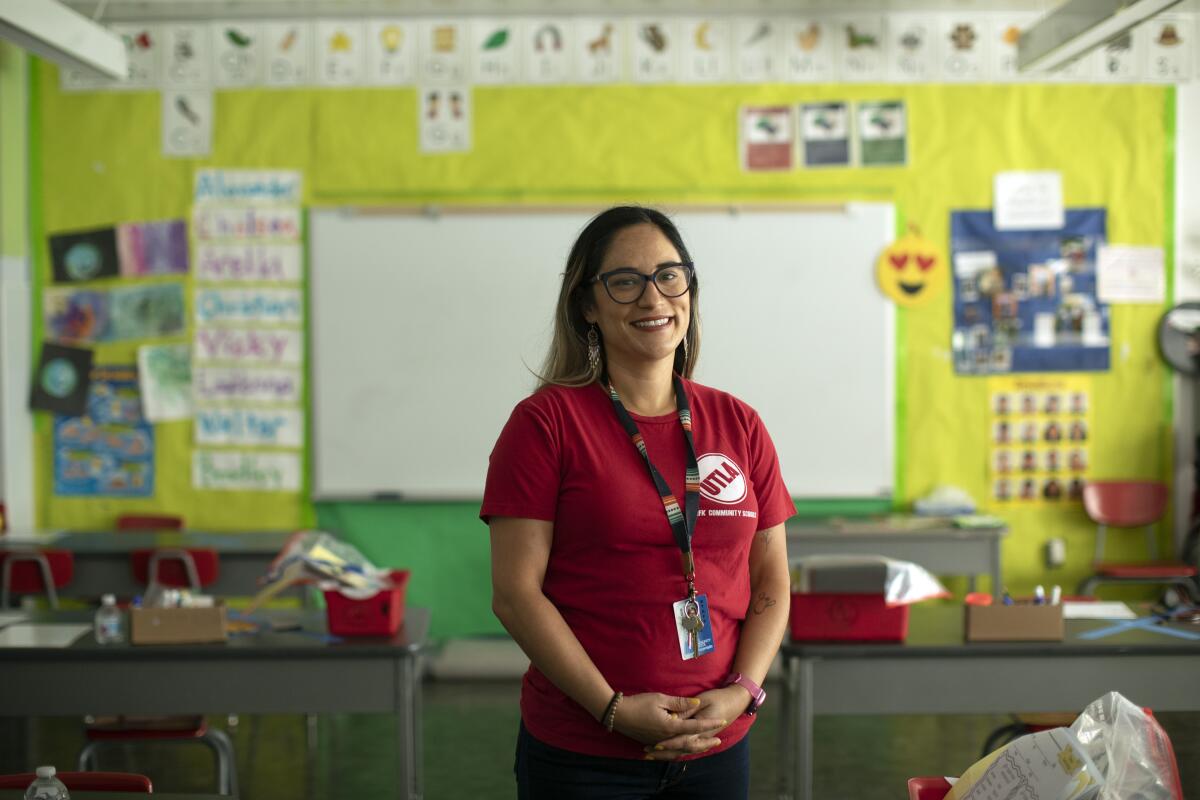
Trouble in paradise
Kauai, the northernmost of the Hawaiian islands, has done a remarkable job of fighting COVID-19. So far, the lush travel destination with 72,000 residents has recorded only two coronavirus deaths and 320 infections.
That success came courtesy of some tough restrictions on business and travel. The island’s visitor count dived 93% in the first three months of this year compared with the same period in 2020, when the pandemic was just getting started. Unemployment hovered around 20% until recently. Kauai’s stark wealth disparities worsened.
The tight rules prevented a health disaster on an island with only 20 ICU beds, but they alienated many in the business community. Now the firms that managed to stay in business are facing new problems as tourists return. For instance, rental cars are hard to find because companies sold off their dormant vehicles to boost cash flow. Some tourists rent U-Haul trucks instead of cars just to have something to drive.
My colleague Richard Read brings you this story about the challenges of rebuilding an island paradise.
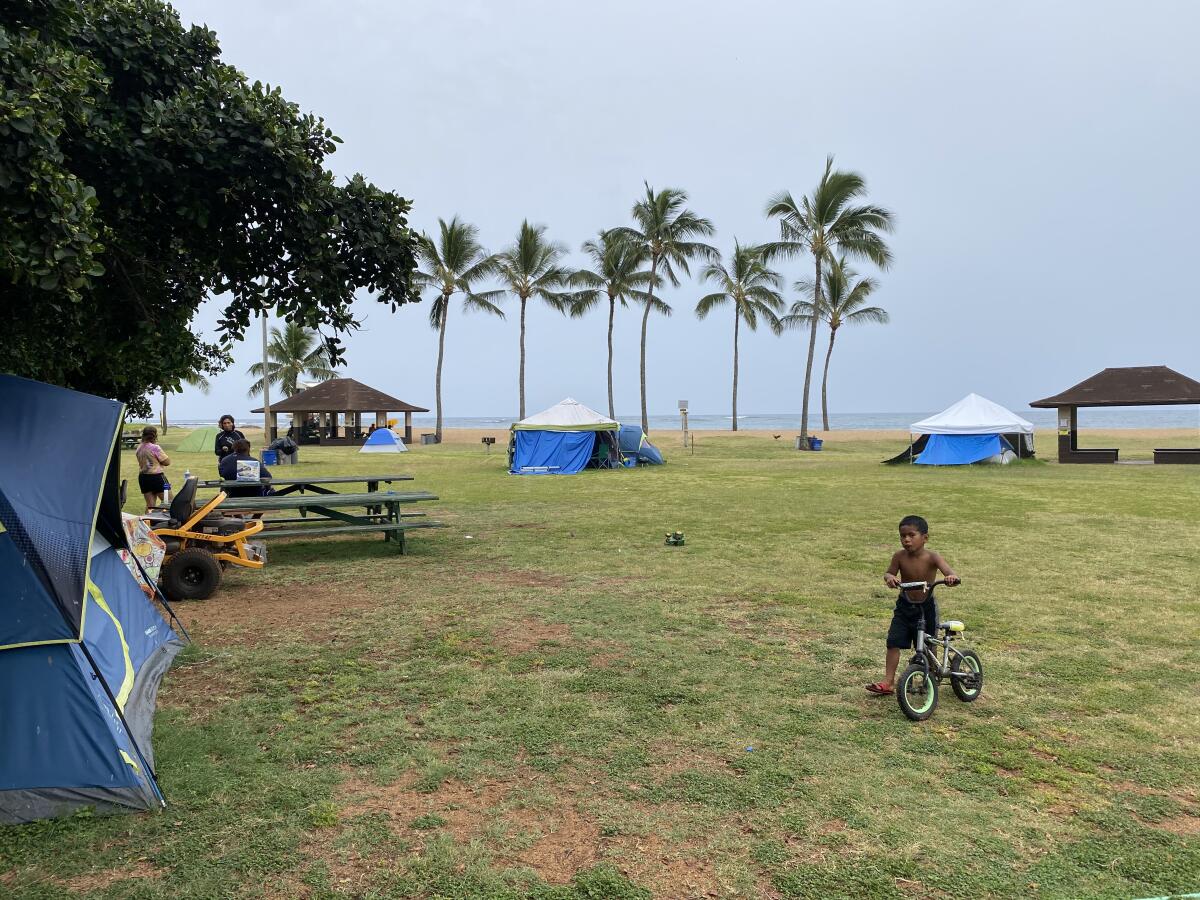
Your support helps us deliver the news that matters most.
What to do this weekend
Plant shrubbery. Celebrate National Trails Day on Saturday by helping plant trees and shrubs at the Abalone Cove Ecological Reserve in Rancho Palos Verdes. Or take a bike ride with the Los Angeles Wheelmen, who’ve been cruising the streets of L.A. since 1945. A Sunday ride starts at 8:30 a.m. in Torrance. Subscribe to The Wild for more on the outdoors.
Attend a film fest. Our weekend culture watch list recommends screenings of classic movies such as “Casablanca,” “Grease” and “Selena,” some of them at the Los Angeles Latino International Film Festival. And in his Indie Focus newsletter’s roundup of new movies, Mark Olsen recommends three new movies, including “Undine,” which Times critic Justin Chang calls “a poker-faced fairy tale, a fantasy wrought by a committed cinematic realist. It’s an example of how a filmmaker can take an outlandish central idea and play it beautifully straight.”
Eat outside. Times subscribers get access to our exclusive interactive list of “Where to eat outside in L.A. right now,” with 44 suggestions ranging from the congee at Alice’s Kitchen in Monterey Park to the triple smashburgers at For the Win in Hollywood Hills. For stay-at-homes, try these three kale salad recipes that might just make you love kale.
Browse. Here’s The Times’ guide to the internet for when you’re looking for information on self-care, feel like learning something new or interesting, or want to expand your entertainment horizons.
The pandemic in pictures
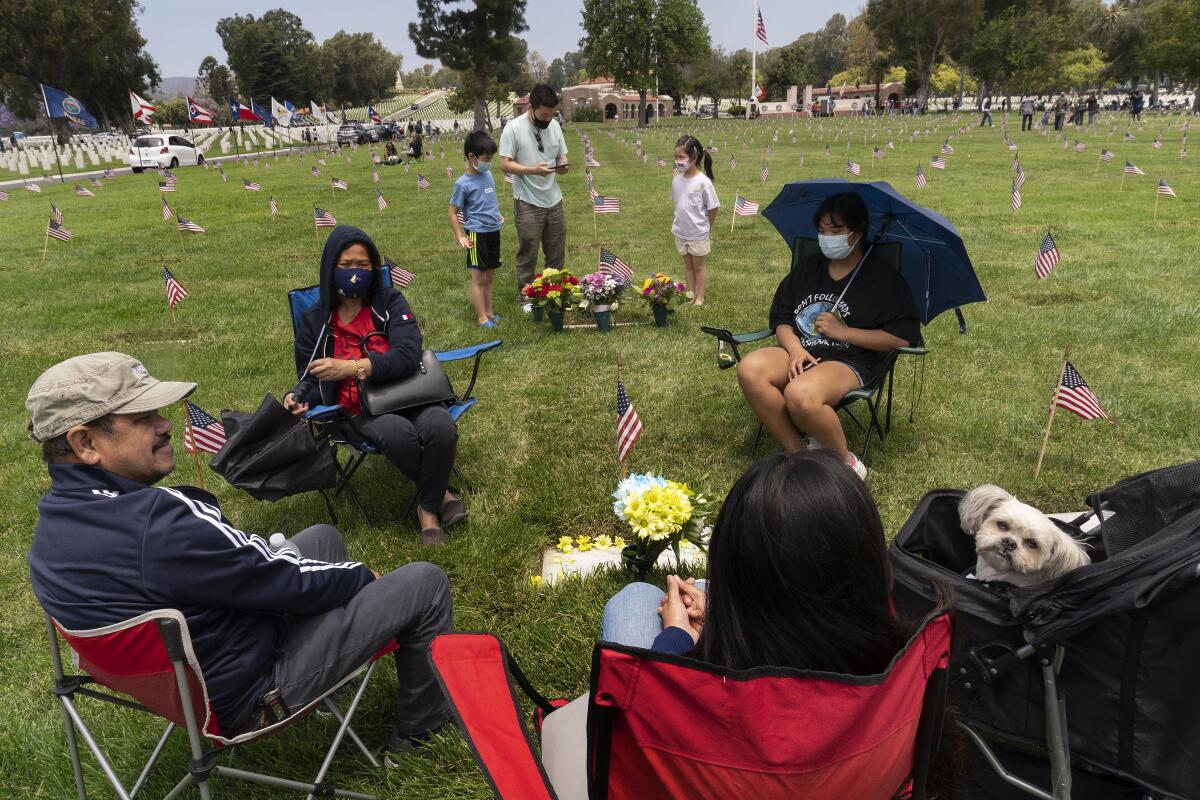
After more than 14 months of life turned upside-down by the pandemic, Memorial Day weekend brought a measure of relief to Californians who cautiously resumed doing the things they normally do, including backyard barbecues and trips to the beach.
For many families, Memorial Day includes visits to the gravesites of loved ones. That includes the Gaviola family (above), who gathered at Los Angeles National Cemetery on Monday to remember 24-year-old Pfc. Mikhail John Alvarez.
The national holiday honors the men and woman who died while serving in the U.S. military, but this year it couldn’t help but remind everyone of the hundreds of thousands of fellow citizens who lost their lives to COVID-19.
Resources
Need a vaccine? Sign up for email updates, and make an appointment where you live: City of Los Angeles | Los Angeles County | Kern County | Orange County | Riverside County | San Bernardino County | San Diego County | San Luis Obispo County | Santa Barbara County | Ventura County
Need more vaccine help? Talk to your healthcare provider. Call the state’s COVID-19 hotline at (833) 422-4255. And consult our county-by-county guides to getting vaccinated.
Practice social distancing using these tips, and wear a mask or two.
Watch for symptoms such as fever, cough, shortness of breath, chills, shaking with chills, muscle pain, headache, sore throat and loss of taste or smell. Here’s what to look for and when.
Need to get tested? Here’s where you can in L.A. County and around California.
Americans are hurting in many ways. We have advice for helping kids cope, resources for people experiencing domestic abuse and a newsletter to help you make ends meet.
We’ve answered hundreds of readers’ questions. Explore them in our archive here.
For our most up-to-date coverage, visit our homepage and our Health section, get our breaking news alerts, and follow us on Twitter and Instagram.




